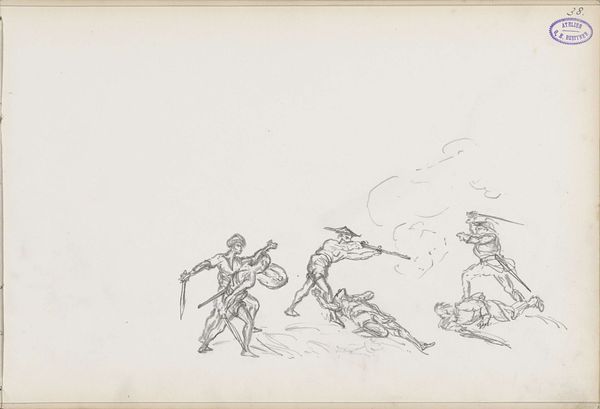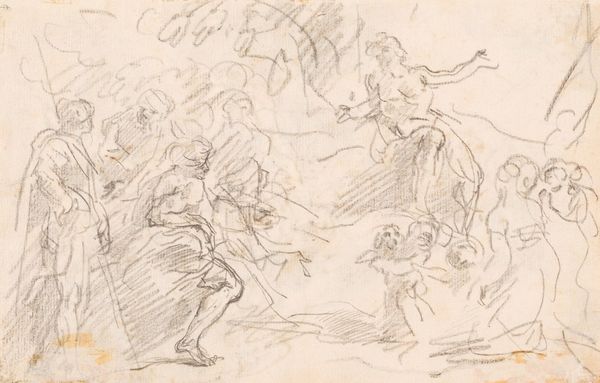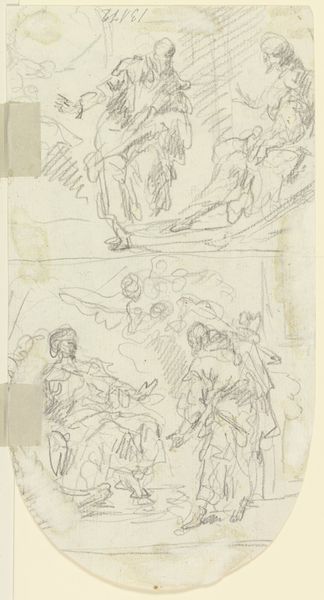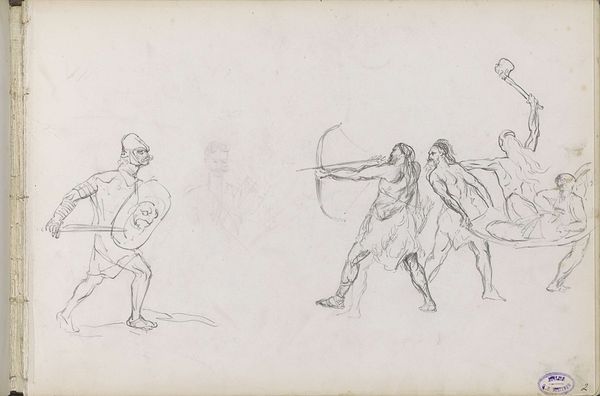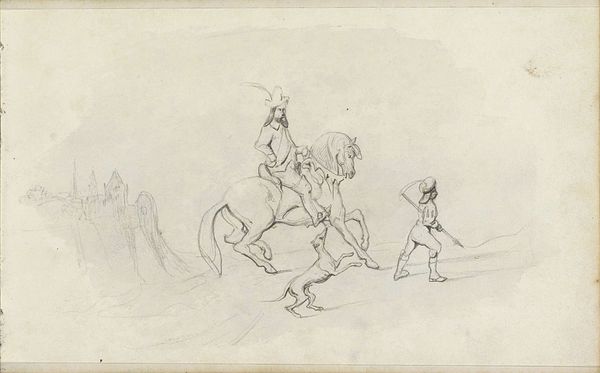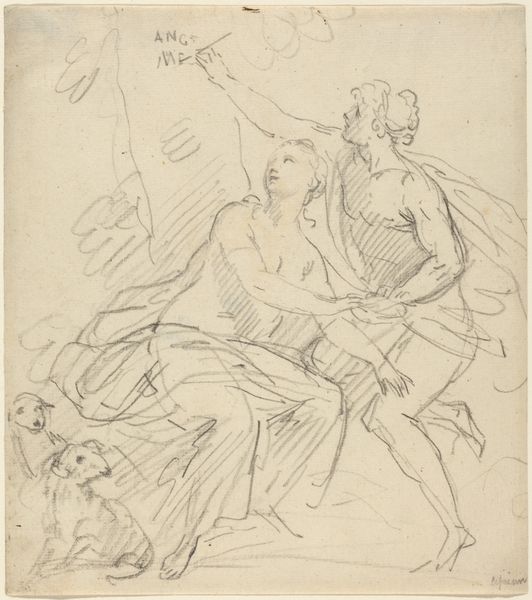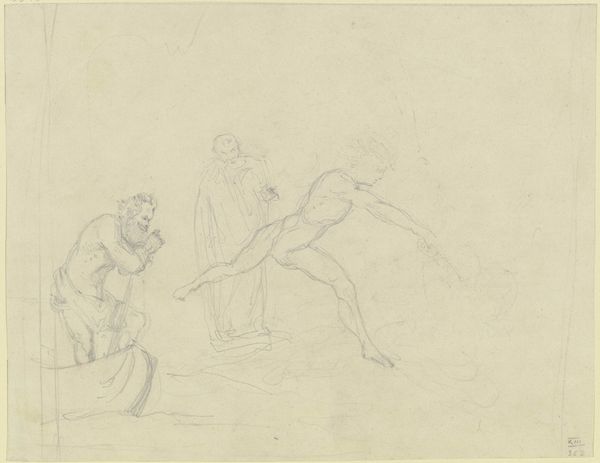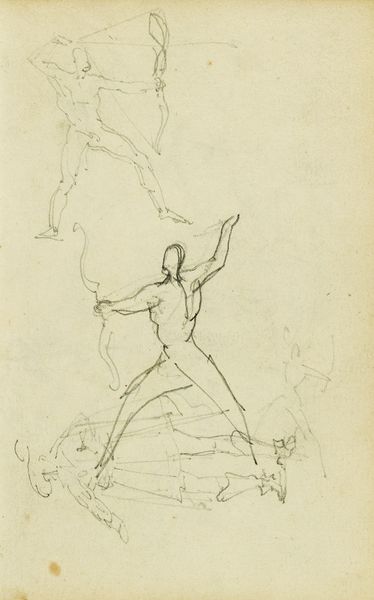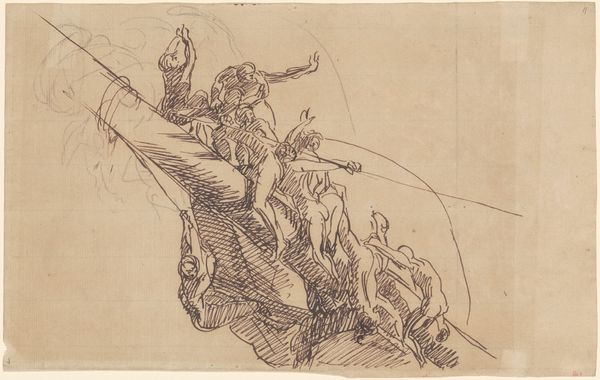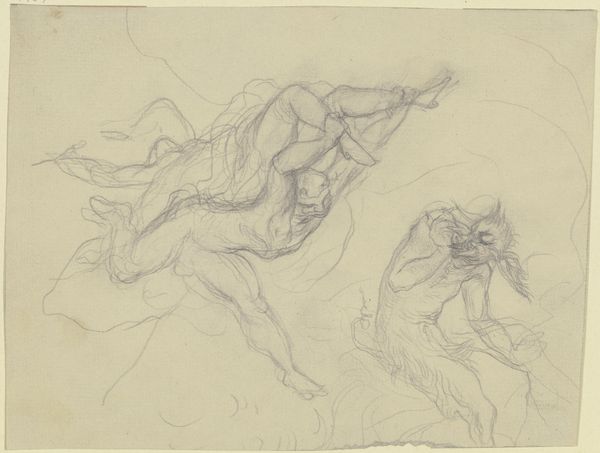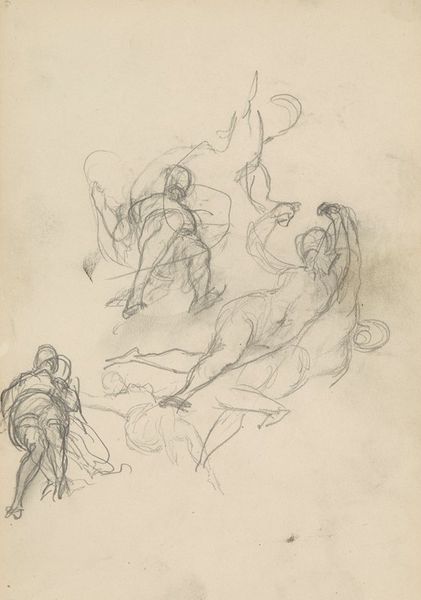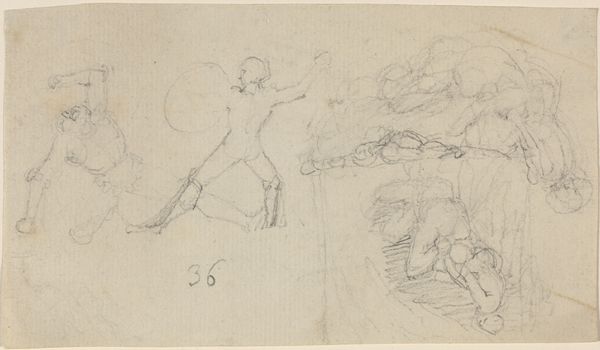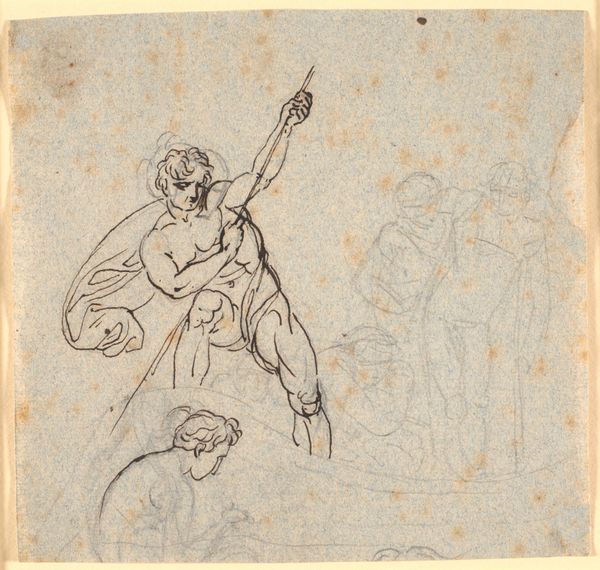
drawing, pencil
#
drawing
#
figuration
#
pencil
#
line
#
history-painting
#
academic-art
#
nude
Copyright: Public Domain: Artvee
Editor: Here we have Théodore Géricault’s “Studies of nude men in combat,” created between 1812 and 1814 using pencil. It's incredibly dynamic, a flurry of motion captured with these quick, expressive lines. How do you interpret the creation of such a piece? Curator: This work fascinates me, particularly regarding its production. Look at the sheer number of figures Géricault renders – each representing not just a body, but also labour, struggle, and ultimately, a challenge to the conventional idealization of the nude in academic art. What material constraints and social expectations would he have been grappling with when rendering this sketch? Editor: It does seem like a rejection of idealized forms, and the sheer number of sketches on one page perhaps suggest an economy of materials? It's very different to, say, Canova's sculptures. Curator: Precisely. This difference points to how artistic value itself is constructed through the materials and their deployment within particular socio-economic systems. Instead of pristine marble, we have a humble pencil drawing, readily reproducible, emphasizing process over polished product, almost like a factory churning out rough studies. What purpose did these drawings serve in Géricault's broader body of work? Editor: Perhaps a preparatory step, but perhaps also, a re-evaluation of traditional themes through a different lens? The drawings depict historical themes and nudes which seems almost deliberately opposed to what one might think of when considering high art? Curator: Yes. Considering how drawings like these might have been consumed—as studies, pedagogical tools, or even collectibles—reveals the various economic circuits in which Géricault operated. Think about who had access to art and art education. He seems to be challenging hierarchies between different methods of artmaking. Editor: That’s given me a lot to consider - looking at it now, the drawing appears as a document of the artist's own labour and its historical context rather than simply representing figures in combat. Curator: Exactly. Seeing the art this way transforms our appreciation of Géricault’s choices and prompts us to think critically about value in art itself.
Comments
No comments
Be the first to comment and join the conversation on the ultimate creative platform.
